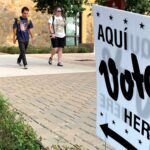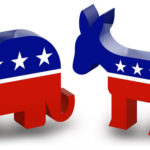Viewpoint: Where does higher education stand in the 2016 Election?

By Daniel E Serna
With a population of 79.4 million, Millennials are now the largest generation. Many are currently enrolled in college and others are heading to college soon.
The need for a higher education has never been greater, and is causing current and future students to worry about funding. By 2020, the need for a college education will be required for an estimated two-thirds of the available jobs, according to The U.S. Department of Education.
The 2016 election will be historical, with many issues taking aim at American society and civil rights. One of the forefront issues is how Millennials, the largest generation in American society, will fund their higher education to better America.
The rising costs of education, loan assistance and loan repayment brings up an issue for the current election. What are our Republican and Democratic nominee’s plans to remedy the situation of rising education costs?
The Need for a degree
Earning a bachelor’s degree earns an average salary of 66 percent more than those holding a high-school diploma or less. A person is less likely to face unemployment having a bachelor’s degree or higher, but at what price?
The cost of attendance for four-year universities has more than doubled. Undergraduate enrollment increased by 31 percent from 2000 to 2014 and is expected to increase by 14 percent by the year 2025, according to the National Center for Education Statistics.
Seventy-one percent of students graduating with a bachelor’s degree can expect to have student loan debt. The class of 2015 graduated with a hefty loan-debt, averaging about $35,000 per student, larger than any prior graduating class.
The loan-debt crown was previously held by the class of 2014, according to the Wall Street Journal.
What are the Republican and Democratic nominees’ plans to ease the cost of higher education for college students?
The two main presidential candidates have laid out policies for making a college education attainable for everyone. Here are the layouts of the two perspectives.
Donald Trump’s view
Donald Trump’s stance on higher education, via his campaign website, is about making all post secondary education easily accessible to afford and complete.
According to Trump’s educational vision posted on his site, one of his goals is to “Ensure that the opportunity to attend a two or four-year college, or to pursue a trade or a skill set through vocational and technical education, will be easier to access, pay for, and finish.’’
The absence of articulated formal higher education policies from the Trump campaign led the National Association of Student Financial Aid Administrators (NASFAA) to use commentary by Trump campaign co-chair Sam Clovis to fill in Trump’s higher education policies.
One of Trump’s higher education stances is to repeal president Obama’s states-proposals which makes community college free for all new high school graduates.
The Republican nominee also favors privatization of student loans shifting from government sponsored student loans.
“Trump wants colleges to play a role in determining loan worthiness on factors that go beyond family income. For example, colleges should factor in future earnings when deciding whether or not to give a student a loan,” Clovis said. “Schools should think carefully before liberal arts majors at non-elite institutions are allowed to borrow based on their future earnings.”
Hillary Clinton’s view
Hillary Clinton’s main initiative for higher education is to make college a debt free experience. She also plans to aid college loan debt.
On her website, Clinton proposes that students from families making $85,000 or less being able to attend a in-state public four year college tuition free. By 2025, Clinton plans on making four year college tuition free for families making $125,000 or less.
“Let’s make debt-free college available to everyone, And let’s liberate the millions of Americans who already have student debt,” Clinton said on a statement, June 22.
Clinton favors income based student loan repayment plans and letting entrepreneurs defer their student loans for up to three years with no interest.
A local view:
Democratic Senator Jose Menendez, a member of The Texas Senate Committee on Higher Education shared his perspective on the two parties views.
“When I look at the list of many of Trump’s proposals, his focus was on reducing the tax bracket for the highest, for the wealthiest,” Menendez said.
Menendez believes Donald Trump’s policies mainly assist the wealthiest Americans.
“I didn’t hear any comments about free community college,” he continued.
“I see that the platform for the Democratic party seems to have a focus on reducing the cost of education possibly reducing debt for those that are going through their education,” Sen. Jose Menendez said.
Regardless of which political party you stand for, it’s important to get out to vote.
The general election is on Nov. 8 with early voting in Bexar county from Monday, Oct. 24 through Nov. 4.
For more information on voting visit Bexar County Elections. A list of early voting sites and dates is available at Bexar County early elections.
More Stories
-
- Election
President Trump: Now What?
-
- Community
What is The Electoral College?






